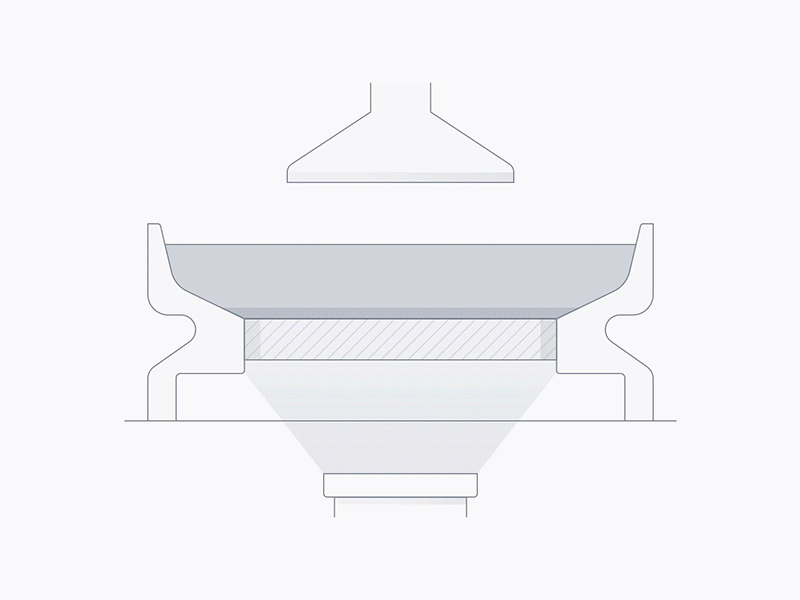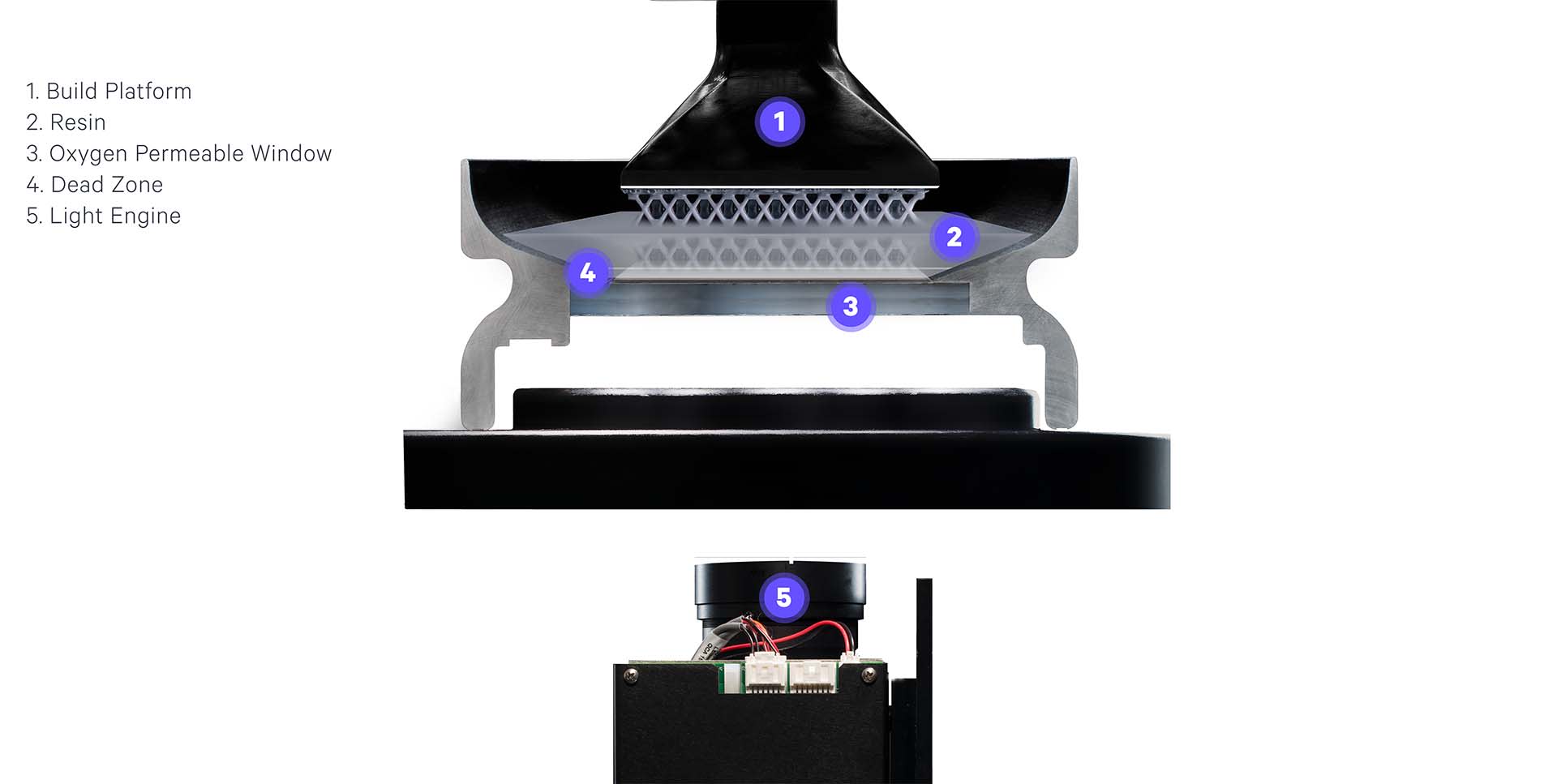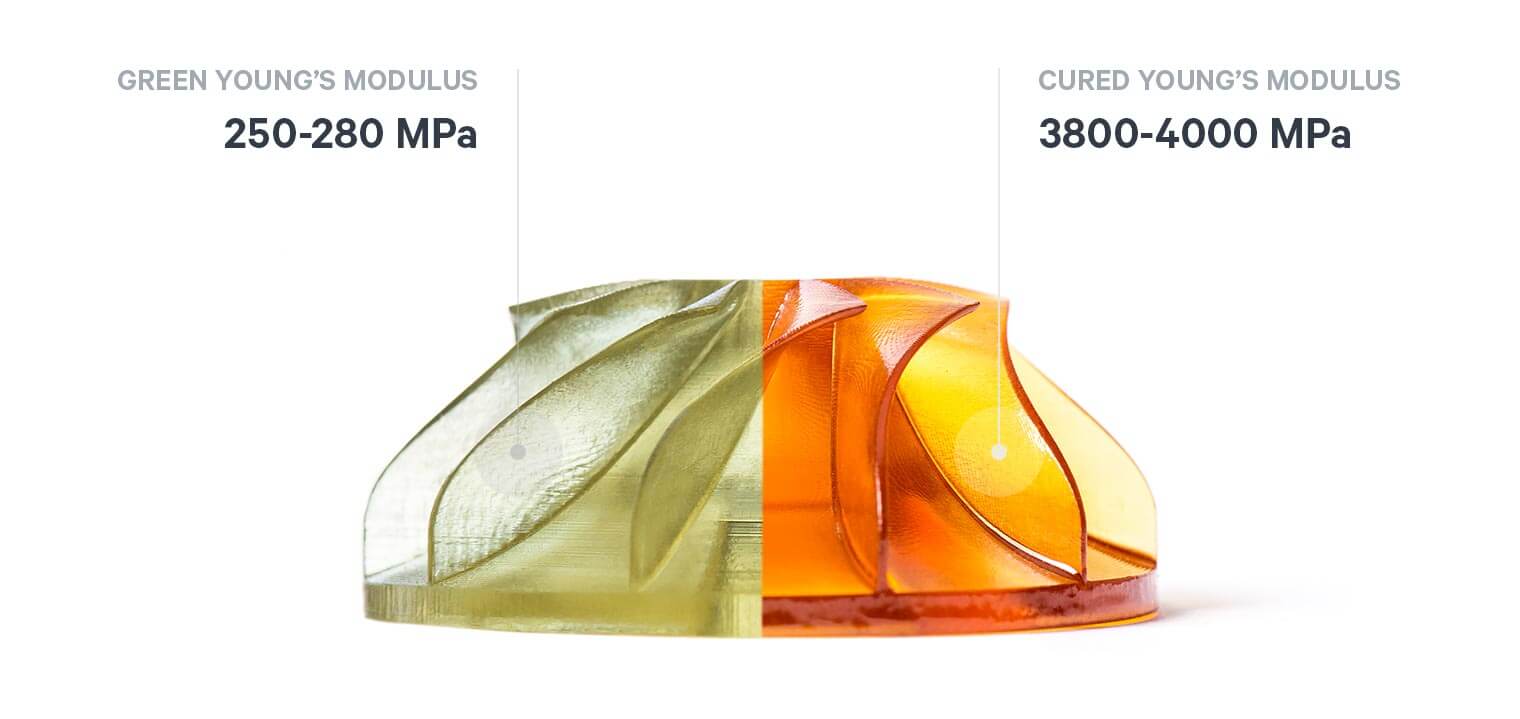The adidas 4D midsole, Riddell Diamond helmet liner, and Specialized S-Works Power saddle with Mirror have one thing in common: They are the world’s highest-volume 3D printed consumer products. At the heart of these next-gen products lies the innovation that made it possible: Carbon Digital Light Synthesis™ (DLS™).

What is Carbon Digital Light Synthesis?
Carbon Digital Light Synthesis (DLS) is a rapid 3D-printing process that uses digital light projection, oxygen permeable optics, and programmable liquid resins to produce polymeric parts with exceptional mechanical properties, resolution, and surface finish. The Carbon DLS system allows engineers and designers to iterate faster and deliver radically reimagined products by introducing consolidated parts, impossible geometries, and programmable lattice structures. Carbon DLS is driven by Carbon’s CLIP process joined with our liquid resins, which range from elastomeric and rigid polyurethanes, to silicones, cyanate esters, and epoxies.

What is CLIP?
CLIP, short for Continuous Liquid Interface Production, uses digital light projection in combination with oxygen permeable optics. CLIP is a photochemical process that continuously cures liquid resin into solid plastic parts using ultraviolet light. It works by projecting light through an oxygen-permeable window into a reservoir of UV-curable resin. As a sequence of UV images are projected, the part solidifies as the build platform rises.

A key aspect of the CLIP process is the “dead zone” — a thin, liquid interface of uncured resin between the window and the printing part. Oxygen presence allows light to pass through the dead zone, curing the resin above it to form a solid part without the part adhering to the window. Resin flows beneath the curing part as the print progresses, which maintains the “continuous liquid interface” that powers CLIP and avoids the slow layering process inherent to many other resin-based printers.
What makes parts printed with Carbon DLS great?
Traditional resin-based 3D printing processes produce weak, brittle parts. Carbon overcomes this by embedding a second heat-activated chemistry in our materials. When using one of our dual cure resins, UV light sets the shape of a part as it prints on a Carbon printer. The part then undergoes a secondary heating step to set the properties. This secondary thermal cure results in robust, engineering-grade mechanical properties comparable to traditional manufacturing plastics and parts with surface finishes equivalent to injection-molded parts.

How can Carbon DLS fit into my manufacturing efforts?
With excellent accuracy, surface finish, and mechanical properties, the Carbon DLS system has a role in manufacturing at any scale—from low-volume production runs that wouldn’t be feasible with injection molding, to high-volume production that takes advantage of unmoldable geometries and novel designs.
At any production scale, Carbon DLS can accelerate your product development process—in some cases, from years down to weeks—by allowing you to prototype and produce on the same platform, and giving you a cost-effective bridge to high-volume manufacturing.

